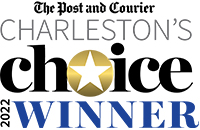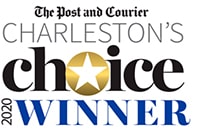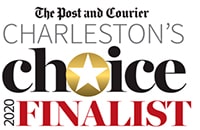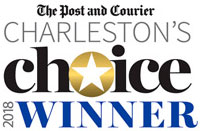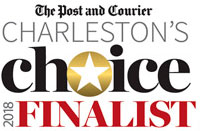History of the Charleston City Market
In 1788, Charles Cotesworth Pinckney ceded the land to the City of Charleston for the express use as a public market, and he stipulated that the land must remain in use as a market for perpetuity.
To fulfill this requirement, the low buildings—sheds—that stretch from Market Hall to the waterfront were built between 1804 and the 1830s. These sheds originally housed meat, vegetable, and fish vendors; each booth rented for $1.00 per day, or $2.00 if the booth had a slab of marble used to keep the meat or fish cold. Butchers often threw meat scraps into the street, much to the delight of local buzzards, which were nicknamed Charleston Eagles. Over the years, the sheds have survived many disasters, including fires, tornadoes, earthquakes, hurricanes, and bombardment.
In 1841, three years after the Masonic Hall on the corner of Meeting and Market Streets was destroyed by fire, the current Market Hall was erected. Architect Edward Brickwell White was paid $300 to create the building’s blueprints, which paid homage to the Temple of the Wingless Victory in Athens. The resulting handsome structure was originally used by the Market Commissioners for meetings and social functions, while the space beneath the hall housed vendors.
Since the 1970s, the original sheds and surrounding neighborhood have housed many small and unique shops. Of special note are the more than 50 sweetgrass basket weavers who carry forth a special Charleston tradition.
The Charleston City Market, recognized as one of the oldest in the country, is part of a permanent exhibit entitled “Life in Coastal South Carolina c. 1840” at the American History Museum of the Smithsonian Institute in Washington D.C.
1788: Land is ceded to the City in order to create a 100-foot-wide merchant avenue from Meeting Street to the Cooper River with the intent purpose of becoming a public food market.
1807: At what was then called “Centre Market,” stands rented for 25 cents per week, payable in advance.
1841: Market Hall is completed.
1938: A tornado severely damages the area surrounding the Charleston City Market.
1944: The economy stalled and only four stalwart vendors remain in operation.
1973: The Charleston City Market is placed on the National Register of Historic Places. A resurrange in popularity and economic prosperity begins.
1986: The 440-room Charleston Place Hotel opens across from the Charleston City Market, a watershed event for the local tourism industry. The Charleston City Market quickly becomes the City’s No. 1 attraction.
1994: The newly renovated 64-room Planters Inn opens across from the Charleston City Market. The boutique property is invited to join Relais & Châteaux, the exclusive French based collection of charming hotels and gourmet restaurants in 55 countries, and it futher helps bring visitors to the neighborhood.
2010: A $5.5 million makeover of the entire Charleston City Market gets under way.
June 27, 2011: The newly refurbished City Market reopens to the public. The centerpiece of the historic landmark, the Great Hall, is now enclosed and air-conditioned with 20 new and returning merchants. Its serpentine walkway, built in the early 1970s, is replaced with a straight central aisle that runs the entire length of the building, matching the open aisles in the reworked open-air sheds.
SWEETGRASS
BASKETS
This style of basket was originally made to winnow rice on local plantations. Today, sweetgrass baskets are works of art and highly sought after souvenirs.
Read MoreCertified
Authentic
When you see the Certified Authentic Handmade in Charleston seal, it means a product is 100% locally made.
Read MoreSpend the
Whole Day
Meet locals. Shop for great souvenirs. Take a tour. Enjoy local cuisine. Check into a hotel overlooking the Historic Charleston City Market.
Read MoreMeet the
Market
Get to know the passionate entrepreneurs, traditions, and certified authentic Made in Charleston items found at the Historic Charleston City Market.
Read More

